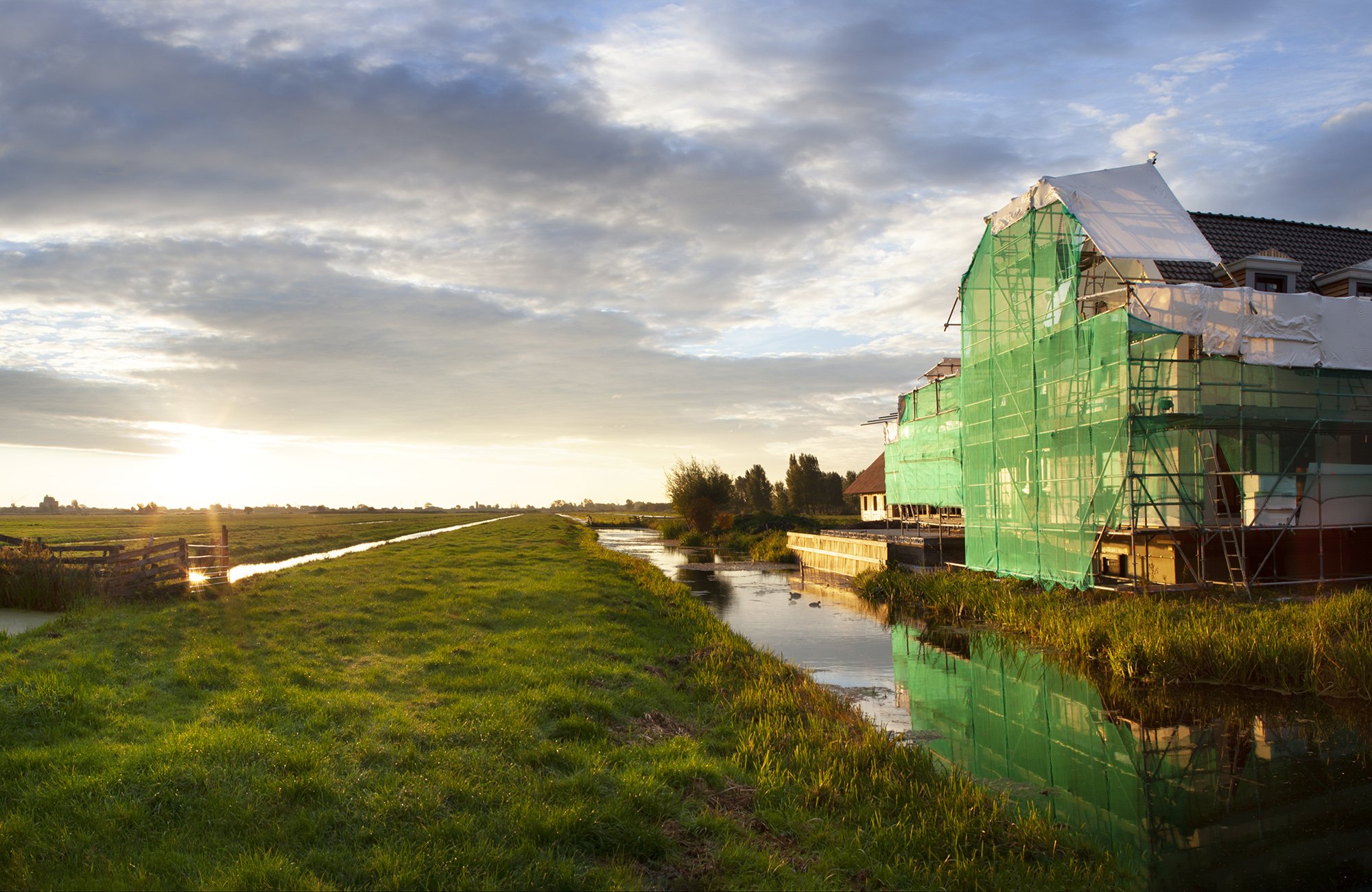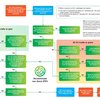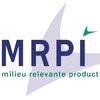Non-Dutch LCAs in NMD - Information for LCA compilers
Construction products with an LCA report in line with EN 15804 can be included in the National Environmental Database (NMD). But an LCA in itself is not sufficient to include a construction product the NMD. The LCA forms the input for an inclusion process that is specific to the Netherlands. The inclusion process comprises verifying that the LCA complies with requirements from the Environmental Performance Assessment Method for Construction Works and the completion of a format to categorise the product in the NMD.

In practice it has proven difficult for international producers to include their products in the NMD, whereby the LCA is included in the NMD Basic Process Database as a so-called NMD ‘environmental declaration category 1’ or as a ‘Basic profile’. Various barriers often result in international parties not submitting a request for inclusion in the NMD, or dropping out of the process at an early stage. Stichting NMD recognises this problem and asked environmental consulting firm EcoReview to examine the inclusion process and produce recommendations to make it easier to include non-Dutch LCAs in the NMD, without affecting data quality.

The producer can opt to have the necessary adjustments made by the original LCA compiler, with a recognised NMD verifier offering support to explain the Assessment Method regulations and the verification process. The alternative is for the changes to be made by an LCA compiler already familiar with the Dutch system. In this case, an additional party is needed to carry out the external verification. To make the process as easy as possible, it is important that all background information (inventory, LCA models) associated with the original LCA/EPD is made available, so that certain activities do not need to be carried out again.
The research was conducted by Kevin Oranje, Tim Mol and Stijn Mulder (all from EcoReview). They based their recommendations not only on their own experiences/insights and desk research, but also sent a questionnaire to Stichting NMD approved LCA experts who are experienced in formulating and/or assessing and verifying non-Dutch LCAs. The answers to the set questions confirmed the supposition that international producers are put off by various barriers. Tim Mol began: ‘There is an idea among international parties that non-Dutch LCAs are, by definition, not suitable for inclusion in the NMD, which is why people give up so quickly.’ According to Stijn Mulder, this deterrent is re-enforced by the idea that a Dutch LCA cannot be used in the rest of Europe. ‘That’s a pity because it’s not one or the other. Both are possible. Dutch LCAs can easily be used in Europe.’ Kevin Oranje continued: ‘If you have an LCA based on European Assessment Method EN 15804 you do not yet comply with the Dutch Assessment Method, although you do comply the other way around. A Dutch verified LCA complies with EN 15804.’
An example of a barrier is data collection using databases. For Dutch LCAs, the designated version from the EcoInvent database should be used in the Assessment Method. The GaBi database, which is often used in Germany, is not permitted in the Netherlands. An international producer with an LCA formulated using GaBi should therefore revise its LCA. ‘This sometimes leads to misunderstandings if there is no explanation or information from Stichting NMD,’ stated Kevin Oranje. ‘Having such prior knowledge also means that any duplication can be avoided.’
The researchers also mentioned various other aspects that are described and detailed differently or not at all in international LCAs. The researchers qualified the specific Dutch additions as having ‘low impact’ to ‘extremely high impact’. The EPD type (and the declared life cycle phases), the end of life scenarios and the statement of module D credits have an extremely high impact. The standard distances for delivery, the additional Life cycle Inventory (LCI) justifications and the communications format form part of the Dutch approach
Decision model
To ease the inclusion process of non-Dutch LCAs in the NMD they have now produced a ‘Decision model for non-Dutch LCAs’. The decision model is an addition to the previously produced ‘Verification Checklist On PCR-NL’. This checklist is nothing more than an extensive list of points that clarify the differences between EN 15804 and the Dutch Assessment Method. The Decision model provides international producers with a step-by-step plan to guide them through this extensive checklist. This takes into account the inclusion process sequence and the ‘high impact’ points from the Assessment Method.
Kevin Oranje continued: ‘The purpose of the decision model is to organise and clarify the steps. And that’s just the start, because streamlining the inclusion process is actually about improving information provision. It starts with providing a good picture of the documents that indicate the conditions and requirements you have to fulfil. The decision model helps you in this. It indicates the main steps you need to take to have an LCA included in the NMD in line with EN 15804. But you should note that this is not a shortcut and offers no relaxation of the requirements. You need to meet the same requirements as apply to a Dutch LCA.’
View the decision model. This document is also available as PDF

The researchers’ recommendation to improve information provision was not only limited to the inclusion process’s technical aspects. Stijn Mulder continued: ‘International producers often bring in an LCA adviser from the country in which they are based. These advisers are generally not well-informed about the Dutch approach. Our information on the Dutch situation for international LCA advisers is very poor, as the relevant documents are not all written in English.’ Tim Mol began: ‘The input module for the data is only available in Dutch, demonstrating that the NMD is not easily accessible for the international market. It is vital that all documents and database input modules are also available to read in English. Moreover, they must be easy to find.’
Finally, the researchers made various general recommendations for Stichting NMD:
Standardise the verification process by developing a format that tracks changes compared with the LCA verified in accordance with EN 15804. This ensures that the recognised LCA expert only needs to focus on the adaptations and changes and not on the already ‘approved’ and unchanged sections of the LCA. This can accelerate the verification process.
Investigate the possibilities of shortening the Verification checklist by omitting items that are almost always met in EN 15804. This will make the checklist easier to read for readers. Several examples were presented in the research.
Work more closely with Stichting ERPI to improve information provision within Europe and investigate how Stichting NMD can become more involved in the international EPD network, ECO Platform. Kevin Oranje continued: ‘Intensifying cooperation with ERPI will enable the Netherlands to exercise more influence at European level and the Dutch approach will be better known by international producers.’
Stichting NMD is currently working hard on the recommendations from this report. NMD Project Leader John Drissen has reported that Stichting NMD has held an orientation meeting with Stichting ERPI. ‘We informed ERPI about the report recommendations and hope to be able to produce an action plan to shorten the Verification checklist and verification process. In the short term, Stichting NMD will seek contact with ECO Platform with the aim of making verified NMD data more visible for the European market. We will also start a communications campaign to inform international producers and suppliers about including environmental data in the NMD. The campaign will be in English with relevant documents being translated. The decision model will play an important role in this.’
| Theme |
Evaluation point |
Checks/modifications |
|---|---|---|
| TYPES OF EPD AND ASSOCIATED LIFE CYCLE PHASES | Scope |
Is the scope in line with the Assessment Method? Cradle-to-gate (basic profile) or Cradle-to-grave? |
| FUNCTIONAL UNIT, PRODUCT UNIT AND REFERENCE LIFE CYCLE |
Functional unit or product unit |
Is the functional unit used in the EPD suitable for the NMD? Add any recalculation factor or make this scalable. |
|
Lifespan |
The reference service life is often not included and this must be added for inclusion in the NMD. |
|
|
SYSTEM BOUNDARIES AND CRITERIA FOR OMITTING INPUT AND OUTPUT |
System boundaries |
Are there modules missing in the LCA? Adjustments are often needed in the scenarios used from |
|
Omitting input and output |
In the case of an EN 15804-verified EPD, this is usually done correctly. | |
|
SELECTION OF DATA AND DATA QUALITY REQUIREMENTS |
Representativeness and data quality |
In the case of an EN 15804-verified EPD, this is usually done correctly. However, it is wise to check the NMD Verification protocol data quality tables. |
|
Processes used/Ecoinvent version |
The EPD must be prepared using the prescribed Ecoinvent version. Other databases are not permitted. The processes used in the model must be checked and/or converted to the correct version. |
|
|
INVENTORY: DATA COLLECTION |
Completeness & quality |
In the case of an EN 15804-verified EPD, this is usually done correctly. |
|
LIFE CYCLE IMPACT ASSESSMENT |
Environmental impact |
If the EPD is prepared in accordance with EN 15804:2012 + A2:2019, only the +A2 set impact categories are included in the EPD. For inclusion in the NMD, the A1 set is also needed plus a national supplement on 4 toxicity effects. If the model is produced in SimaPro, the LCA calculation program, and using the right Ecoinvent version, the current LCA model with the NL calculation method can be used (or made available) for this additional calculation. |
|
LIFE CYCLE INTERPRETATION |
Sensitivity analysis/focus point analysis |
Following a model update/result recalculation, a reformulation must take place in line with Assessment Method provisions. |
|
COMMUNICATION FORMAT AND FORMAT FOR SUBMITTING DATA TO STICHTING NMD FOR THE NMD |
Input |
This must always be added and the results must be included in the NMD input module. |
Subscribe to our Newsletter
Sign up now and receive our newsletter (in Dutch) 10 times a year!


